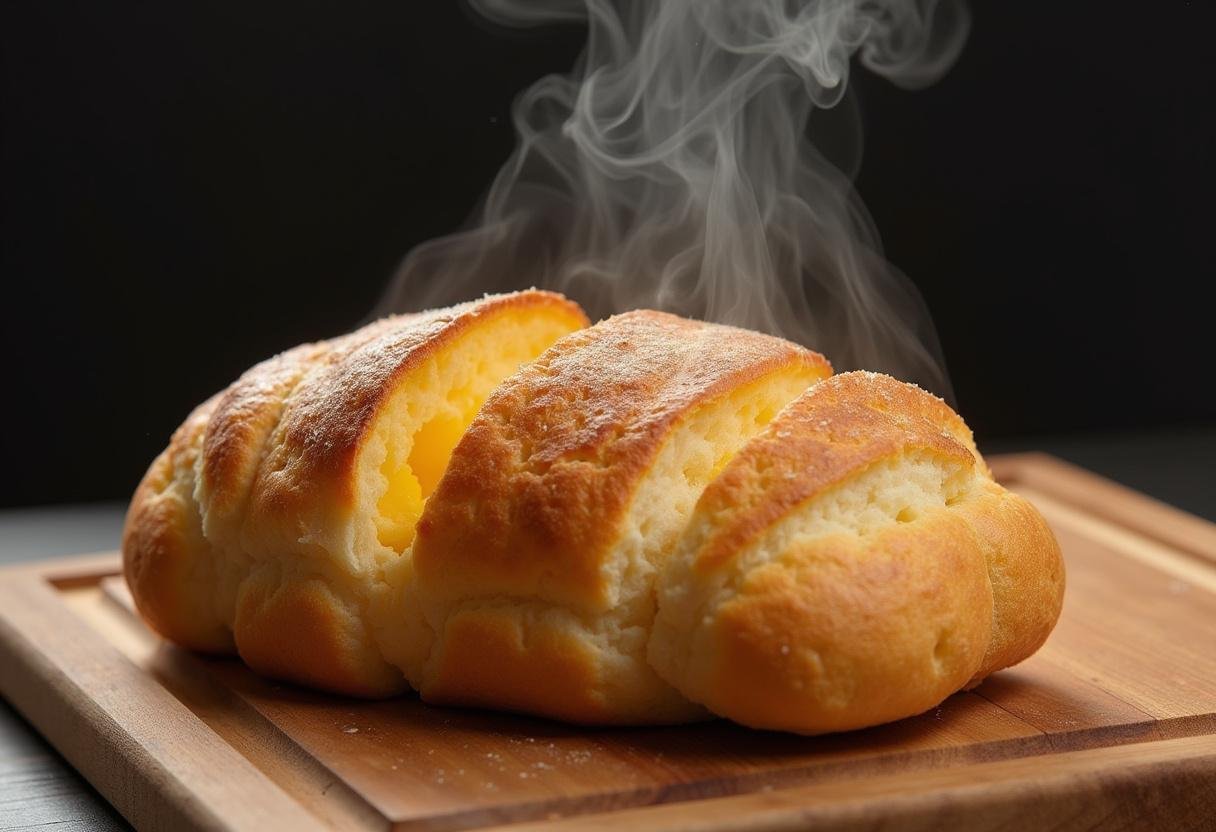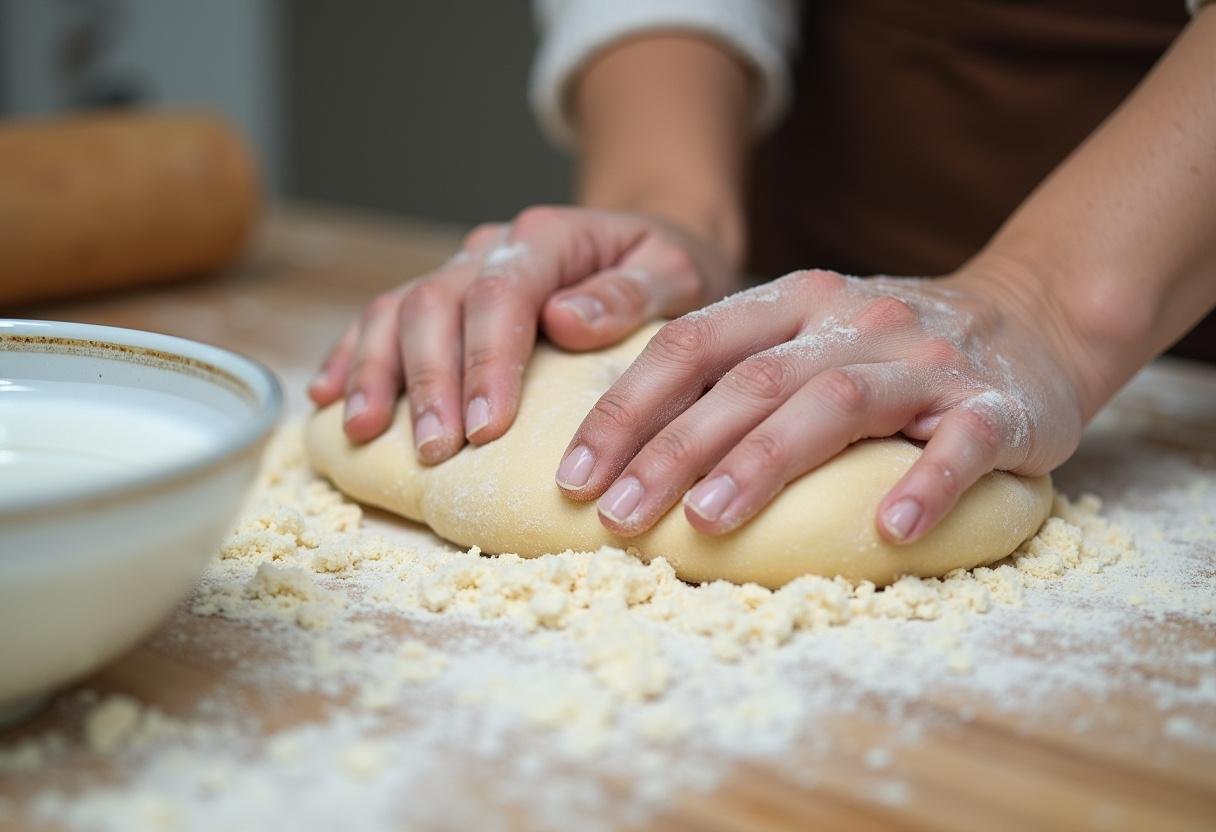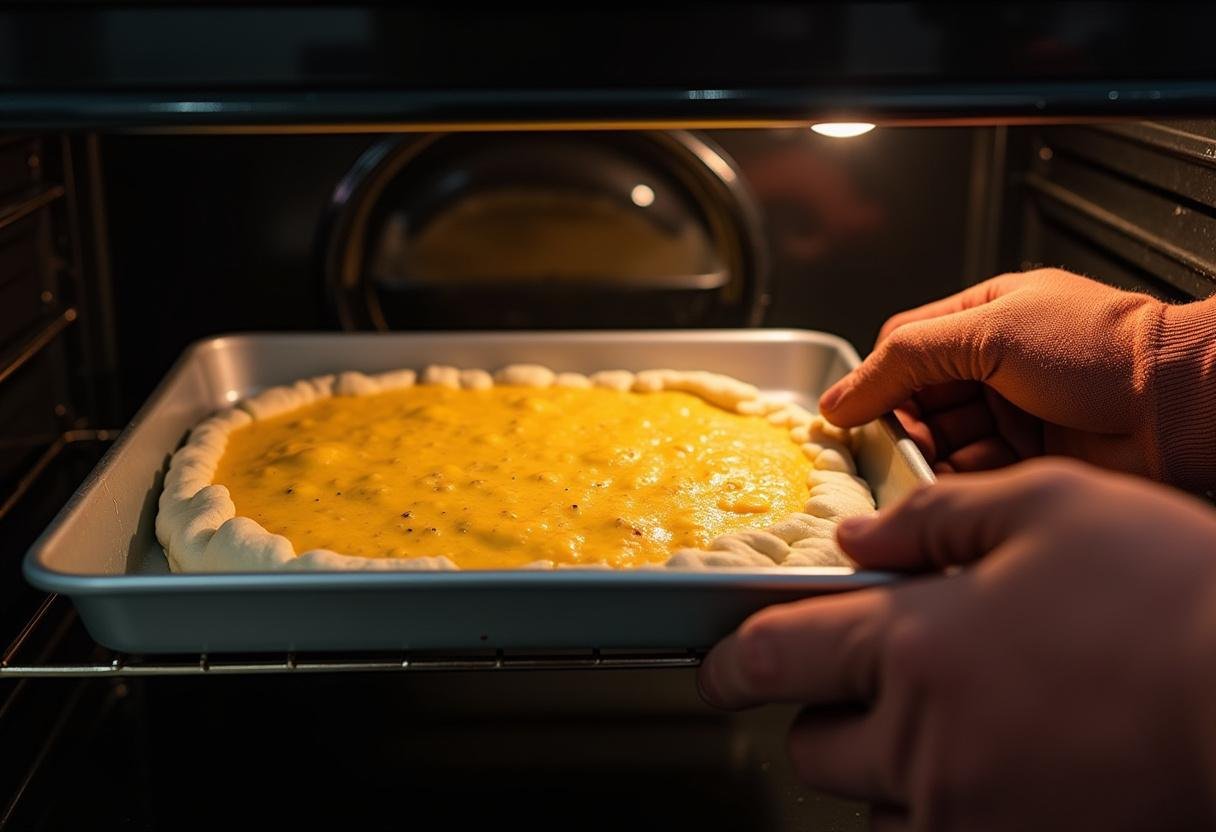Cheese Bread: Irresistibly Cheesy, Golden, and Fluffy Perfection 🧀🍞🔥
1. Introduction
There’s nothing quite like the aroma of freshly baked cheese bread filling your home with its warm, inviting scent. This ultimate comfort food combines the satisfying chew of homemade bread with the rich, gooey goodness of melted cheese in every bite. Whether you’re serving it alongside your favorite soup, as an appetizer for guests, or simply enjoying it as a delicious snack, this cheese bread recipe will quickly become a family favorite. The best part? It’s surprisingly easy to make with just a few basic ingredients and simple techniques that even beginner bakers can master.
For those looking to expand their bread-making repertoire, you might enjoy exploring other cheese bread variations that offer different textures and flavor profiles.

2. Ingredients
This cheese bread recipe uses simple pantry staples to create something truly special. Here’s what you’ll need:
- 3 cups all-purpose flour – The foundation of your bread, providing structure and texture
- 1 tbsp sugar – Helps activate the yeast and adds subtle sweetness
- 1 tsp salt – Enhances all the flavors in the bread
- 1 packet (2 ¼ tsp) active dry yeast – The magical ingredient that makes your bread rise
- 1 cup warm water (110°F) – The perfect temperature to activate yeast without killing it
- 2 tbsp olive oil – Adds moisture and helps create a tender crumb
- 1 ½ cups shredded cheese – Use a combination of cheddar for sharpness and mozzarella for stretchiness
- 1 egg (for egg wash, optional) – Creates that beautiful golden crust
For more delicious bread ideas, check out our collection of homemade bread recipes that are perfect for any occasion.
3. Step-by-Step Instructions
Step 1: Prepare the Dough
Begin by combining your dry ingredients in a large mixing bowl. The flour provides structure, while the sugar feeds the yeast and the salt balances the flavors. Make a well in the center and slowly pour in the warm water and olive oil. The water temperature is crucial – too hot will kill the yeast, too cold won’t activate it properly. Mix until a shaggy dough forms, then turn it out onto a lightly floured surface. Knead for 5-7 minutes until the dough becomes smooth, elastic, and springs back when lightly pressed. This kneading develops the gluten that gives bread its wonderful chew.

Step 2: Knead and Let Rise
After the initial kneading, transfer your dough to a lightly greased bowl. Cover it with a damp kitchen towel or plastic wrap to create a warm, humid environment ideal for rising. Place it in a draft-free spot – many bakers use the oven with just the light on for consistent warmth. The dough should double in size, which typically takes about an hour depending on room temperature. This first rise allows the yeast to work its magic, creating air pockets that will make your bread light and fluffy.

Step 3: Add the Cheese
Once your dough has risen beautifully, gently punch it down to release excess air. Flatten it slightly on a clean surface, then generously sprinkle your shredded cheese over the surface. The combination of cheeses is key – cheddar offers bold flavor while mozzarella provides that irresistible stretch. Fold the dough over the cheese and knead gently to distribute the cheese evenly. Be careful not to overwork the dough at this stage, as you want to maintain those precious air bubbles.

Step 4: Shape and Bake
Now comes the fun part – shaping your cheese bread! You can form it into a traditional loaf, divide it into individual rolls, or get creative with braids or knots. Place your shaped dough on a parchment-lined baking sheet. For that gorgeous golden crust, brush the top with an egg wash (simply beat an egg with a tablespoon of water). Bake in a preheated 375°F (190°C) oven for 20-25 minutes. You’ll know it’s done when the crust is deep golden brown and the bread sounds hollow when tapped on the bottom.

4. Tips for the Best Cheese Bread
- Cheese selection matters: Always shred your own cheese from blocks rather than using pre-shredded, which contains anti-caking agents that can affect melting.
- Temperature is key: Make sure your water is between 105-110°F for optimal yeast activation. Too hot will kill the yeast, too cold will slow it down.
- Patience pays off: Don’t rush the rising process. The slower the rise (within reason), the better the flavor development.
- Get creative with add-ins: Consider mixing in cooked bacon bits, caramelized onions, or sun-dried tomatoes for extra flavor dimensions.
- Rest before slicing: As tempting as it is to cut right in, let the bread cool for at least 15 minutes to allow the cheese to set slightly.
5. Serving Suggestions
This versatile cheese bread shines in many serving scenarios. For a comforting meal, pair it with a hearty bowl of tomato soup or chili. It makes an excellent accompaniment to pasta dishes, or can be served as part of a brunch spread. For appetizers, cut into small squares and serve warm with marinara dipping sauce. The bread also makes incredible grilled cheese sandwiches – just slice, add more cheese if desired, and grill until crispy. For a sweet-savory twist, try drizzling with honey or serving with fruit preserves.
6. Storage and Reheating
To maintain freshness, store cooled cheese bread in an airtight container at room temperature for up to 2 days. For longer storage, wrap tightly in foil and freeze for up to 2 months. To reheat, place in a 350°F oven for 5-10 minutes (15 if frozen) to restore that just-baked texture. Avoid microwaving as it can make the bread rubbery. For individual slices, toasting works wonderfully to revive the crispy exterior.
7. Variations
- Spicy Cheese Bread: Add 1-2 chopped jalapeños (seeds removed for less heat) or 1 teaspoon red pepper flakes to the dough.
- Garlic Herb Cheese Bread: Mix in 2 minced garlic cloves and 2 tablespoons of your favorite fresh herbs (rosemary, thyme, or basil work well).
- Everything Bagel Cheese Bread: Before baking, brush with egg wash and sprinkle with everything bagel seasoning.
- Gluten-Free Version: Substitute with a 1:1 gluten-free flour blend and add 1 teaspoon xanthan gum if not included in your blend.
- Breakfast Cheese Bread: Add ½ cup cooked, crumbled breakfast sausage and serve warm with butter.
8. Frequently Asked Questions
Q: Can I use instant yeast instead of active dry yeast?
A: Absolutely! Instant yeast can be mixed directly with the dry ingredients without proofing. Use the same amount, but you may notice a slightly faster rise time.
Q: Why didn’t my bread rise properly?
A: Several factors could be at play: expired yeast, water that was too hot/cold, or a drafty rising location. Always check your yeast expiration date and ensure your rising environment is warm and draft-free.
Q: Can I make this dough ahead?
A: Yes! After the first rise, you can refrigerate the dough (covered) for up to 24 hours. Let it come to room temperature before shaping and baking.
Q: What’s the best cheese combination?
A: While cheddar and mozzarella are classic, try experimenting with Gruyère for nuttiness, pepper jack for spice, or gouda for smokiness.
9. Conclusion
Mastering this cheese bread recipe opens up a world of homemade baking possibilities. There’s something incredibly satisfying about pulling a golden, cheese-filled loaf from your own oven, filling your kitchen with that irresistible aroma. Whether you stick to the classic version or experiment with different cheeses and add-ins, this versatile bread is sure to become a staple in your recipe collection. The process may seem involved at first glance, but each step is simple and rewarding. So preheat that oven, gather your ingredients, and get ready to enjoy the incomparable pleasure of warm, homemade cheese bread – your taste buds will thank you!

